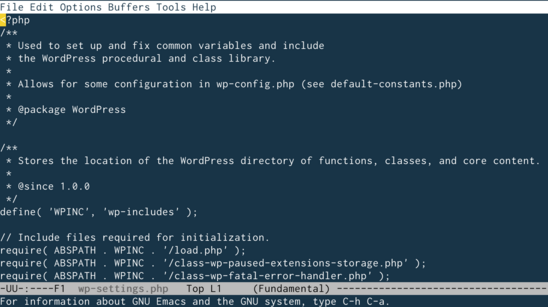More languages
More actions

A line editor is a type of text editor in which editing is done via inputing commands that apply to one or more lines of text. That is, typing, editing and document display is not a simultaneous process. In contrast, common screen-based editors allow the user to interactively and directly navigate, select, and modify portions of a document. Line numbers or search functions are generally utilized for navigating the text, and, in editor that support it, making changes within lines.[1]
History[edit | edit source]
Line editors were the first kind of text editor, as not only memory limitations, but also the fact that most computers only had printers as their output method, meant that such programs were ideal for their time.[2] The first line editor is, possibly, a program named "Colossal Typewriter"[3], which was implemented on the computers of the Bolt, Beranek and Newman company by December 1960. The program inspired the creation of more editors, such as Expensive Typewriter in 1961[4], and QED, which was implemented in 1968[5]. In 1971, ed, one of the most iconic line editors, which would be included in every version of UNIX up to this day, was created by Ken Thompson.[6]
Line editors are still used in the modern day, mostly for accessibility reasons (as the sequential editing style is more welcoming to screen reader software), and for system recovery, as they tend to not rely on the graphics and user interface stacks of most text editors.
Soviet advancements[edit | edit source]
Soviet researchers implemented their own version of UNIX ed in 1983, with the advent of the MNOS Unix-like operating system. The editor, much like the whole OS, supported the U-code cyrillic character set, making it the first fully bilingual text editor in computing history[7]. In contrast, the Unicode specification would not be created until 1988, and it would not be implemented until 1991, with Unicode support for many text editors coming much later.[8]
References[edit | edit source]
- ↑ Kunal Dhyani. "Editors and Its types in System Programming" GeeksForGeeks.
- ↑ "Impressora de linha Burroughs". FIPP Technology Museum.
- ↑ John McCarthy and Roland Silver (1960). Memorandum - Colossal Typewriter Program.
- ↑ US Government (1972). Expensive Typewriter.
- ↑ "Q. E. D Time-Sharing Editor".
- ↑ "UNIX Version 1 Manual Pages (man12)".
- ↑ "Soviet Unix Clone DEMOS".
- ↑ The Unicode Consortium. "History of Unicode Release and Publication Dates"
